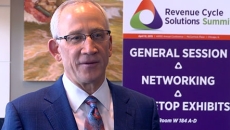Healthcare Finance Staff
$52 billion and growing is the trend in high-cost pharmacy benefits, as more and more Americans use prescription drugs with expenses exceeding the U.S. median household income.
In the late 1990s you could have taken what hospitals charged for inpatient chemotherapy and bought a Ford Escort econobox. Today average chemo charges are enough to pay for a Lexus GX SUV, not even counting the price of anti-cancer drugs.
Bert Zimmerli, Executive Vice President and Chief Financial Officer of Intermountain Healthcare, enthuses about wireless technology, sensors and connected health as they pertain to the growing focus on revenue cycle management in healthcare.
If nothing else, the collapse of multi-million dollar state-based exchanges has created a PR problem for health reform, but that's only part of the issue.
For the third year, Iowa's largest insurer is shunning the state exchange, letting for-profit competitors take on subsidized members.
From the depths of the Internal Revenue Services comes an attempt to clarify some ambiguities for the uniquely taxed Blue Cross Blue Shield insurers and their medical cost ratios.
When it comes to comprehensive contraception options as a preventive health benefit, free means free, regulators reminded the insurance industry.
Based on insurer estimates of payables and receivables, plus an uncertain funding limit, the risk corridor program can seem like it's actually making the new individual market more shaky.
Perhaps the most visible wage hike by a chief executive in a century, Aetna's hourly raises are part of an audacious effort to not only profit in the new healthcare economy but influence its course.
While so much is changing, so much is still the same in healthcare, like the fact that some 85 percent of commercial health insurance payments are still paper-based.
